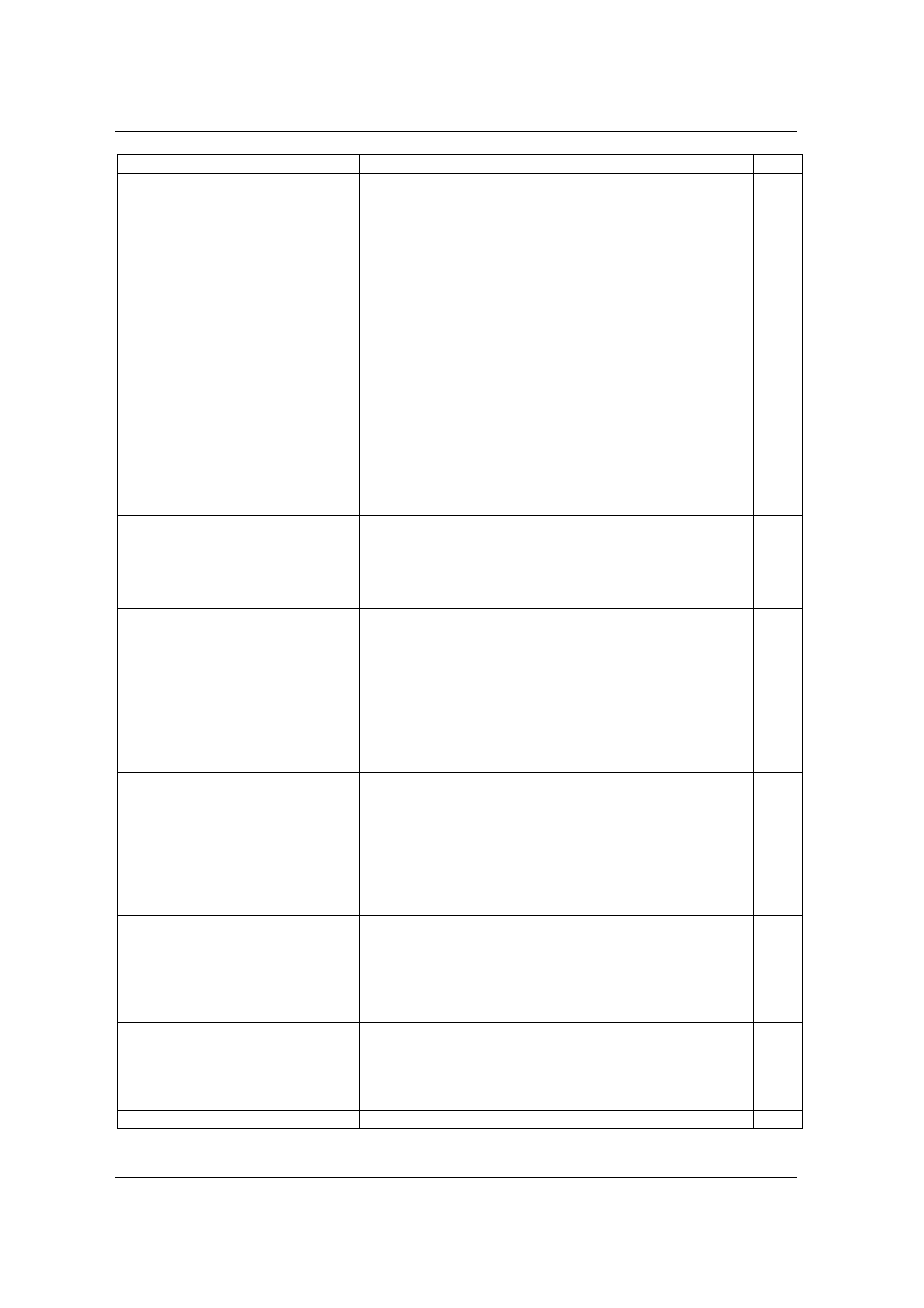AMETEK SFA Series Ethernet Programming User Manual
Page 110

SCPI Command Operation
SG Series Programming
6-38
M550129-03 Rev K
Command
Description
SCPI
:DEFine <step#>,
LOOP,<count>
Programs the
LOOP
sequence command into the
selected sequence at <step#>. The
LOOP
sequence
command, together with its associated <count> value
and the
NEXT
sequence command, provides a means of
repeating a set of sequence steps for a defined number
of times. All sequence steps that exist between the
LOOP
sequence command and the
NEXT
sequence
command shall be executed for <count> number of
times. It is recommended that the
LOOP
command and
its corresponding
NEXT
command be in the same
named sequence; nevertheless, they may be in different
named sequences. The ability to place these two
commands in different named sequences allows for the
chaining of a number of named sequences together
using the
GOTO
command, and then to put a loop
around that entire chain to be repeated a number of
times. The
LOOP
NEXT
command pair does support
nesting to 10 deep, and the count value must be
between 0 and 65535.
C
:DEFine
<step#>,NEXT
Programs the
NEXT
sequence command into the
selected sequence at <step#>. The
NEXT
command
must follow a matching
LOOP
command. The
NEXT
command causes sequence execution to resume at the
matching
LOOP
command, with a count decreased by 1.
C
:DEFine
<step#>,STOP
Programs the
STOP
sequence command into the
selected sequence at <step#>. This sequence
command causes sequence execution to stop while the
unit remains at the state of the last command within the
sequence. This command is valid for steps 1 thru 21.
When the
PROG:MALLOCATE DEFAULT
command is
used, a
STOP
command is automatically loaded into
step 21 of that new sequence. This
STOP
may be
overwritten to become a
RETURN
or GOTO command.
C
:DEFine
<step#>,GOTO,”name”
Programs the
GOTO
sequence command into the
selected sequence at <step#>. During sequence
execution, the effect of this sequence command is to
cause execution to transfer to the beginning of the
sequence named “name”. This step is valid for steps 1
thru 21. The name must be in double quotes. See the
PROG:NAME
“name” command for how sequences may
be given user defined names.
C
:DEFine
<step#>,PAUSE
Programs the
PAUSE
sequence command into the
selected sequence at <step#>. During sequence
execution the effect of this command is to cause
execution to suspend until a
RESUME
command is
issued to resume execution. This step is valid for steps
1 thru 20.
C
:DEFine? <step#>
Queries the selected sequence for the program
contents at step <step#>. The response will read back
the step type and defined parameters when
programmed. The resolution is defined by the step
type.
C
:DELete
Program Delete subsystem
C